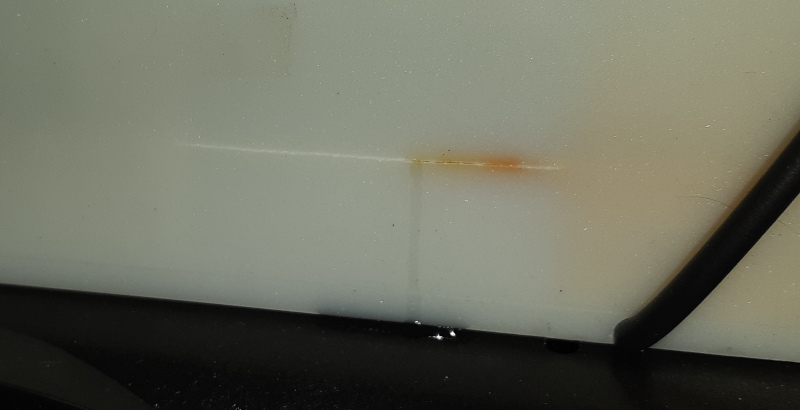On the evening of September 3, 2025, there was suddenly a strong and remarkably unpleasant flat metallic odour in our master bedroom and ensuite. We opened all the doors and windows and got the fan on, and eventually it went away. The smell didn’t come back after closing up, but the next morning when I was inspecting the Redflow ZCell battery in the crawl space under the house I discovered a 6cm long crack towards the right hand side of the back of the electrode stack, about 2.5cm above the base. A small amount of clear liquid was leaking out.

Due to the way our house is constructed on a hill, the master bedroom, walk in robe and ensuite on the lower floor share some airflow with the crawl space under the main floor of the house. For example, the fan in the ensuite vents to that space, and I’ve felt a breeze from an unfinished window frame in the walk in robe, which must be coming from the space under the house. I’ve since siliconed that window frame up, but the point is, the electrode stack split, the battery was leaking, and we could smell a toxic fume in the bedroom.
Continue reading